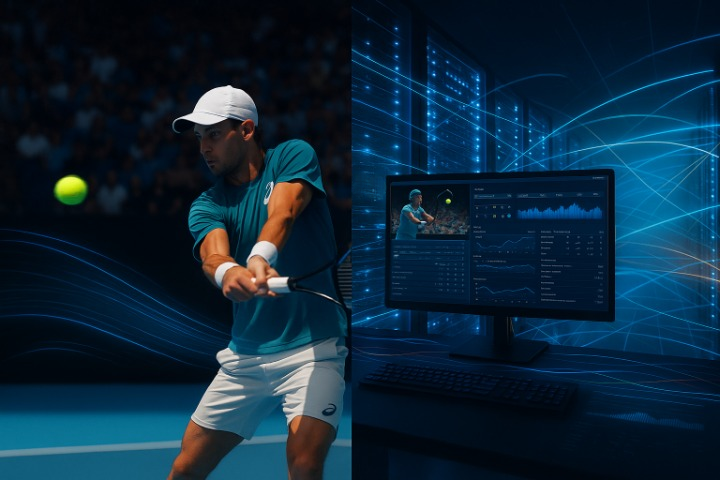
Live Sport Is the Toughest Streaming Platform There Is
During the two weeks of the Australian Open 2025, more than 115 million page visits hit ausopen.com and the tournament's mobile app. Each one of these represents a visitor or fan carrying an expectation shaped by Netflix, Spotify, and every other platform that taught the world to expect instant, flawless, always-on digital.
The difference? Netflix doesn't have to handle a fifth-set tiebreaker that sends half of the world refreshing the same page at 11:47 pm. Prime Video doesn’t deal with millions of users chasing a live moment they can’t rewind. Disney+ never has to serve truth that's being written in real-time by athletes in 35-degree heat.
Many sports organisations still call this "the website." Wrong. It's critical infrastructure that happens to look like a website. When your scores lag by 30 seconds during match point, you're breaking a promise to your fans, sponsors, and advertisers, and revenue does go down.
Here's what it takes to run infrastructure that delivers a brand experience.
Speed Drives Revenue
Speed is the foundation of everything.
Fans arrive expecting load times under two seconds. And that’s if they are patient. Every other digital experience they have (and go back to) delivers that. The difference between a completed session and an abandoned one is less than three seconds. When a sports platform doesn’t deliver this, fans leave. Thats the brutal law of the jungle
Advertisers pay for user engagement. Slow pages kill engagement before it starts and ad revenue simply clicks, or taps away. Last year, code improvements to the Australian Open website and app delivered a 64% faster overall response time during AO25. Over multiple years, you can see how these technical gains translate into commercial results: Craig Tilley, Tennis Australia's CEO reported a 22% increase in revenue for AO25. The message is simple: technical improvements drive revenue.
Resilience Is the Baseline
Zero downtime during a major tournament is merely a baseline promise. Miss it once and trust is eroded. Fans don't care about server issues or traffic spikes or third-party integration failures. They care that the thing they showed up for didn't work when it mattered. To them.
And here lurks a silent killer: full crashes are rare. The real problem is performance that degrades just enough to frustrate fans without triggering alarms. Successful systems have a strategy to catch these moments before hundreds of sessions walk away.
During AO25, Tennis Australia's platforms saw more than 18 million video views and 2.8 million article views. Those numbers exist because pathways stayed clear under load. The teams that ensure system resilience make that work invisible. Fans only think about your platform when something breaks. When performance is flat and steady during peak traffic, no one notices the infrastructure. That's the goal.
Real-Time Can’t Buffer
Live sport operates in a permanent state of now. Fans checking a score expect the number on their screen to reflect what just happened on the court.
This is where sport’s digital separates from every other streaming experience. Netflix can buffer. Sports can't. The moment a fan realises your platform is behind, they leave and find somewhere else faster.
115 million visits during AO25 meant 115 million expectations that the platform would deliver accurate, immediate information. Tennis Australia's digital infrastructure handled that load with zero downtime because the technical strategy treated real-time updates as non-negotiable. Scores, schedules, live stats, video. All of it had to be accurate and fast.
This has to inform how you architect everything. Systems built for speed often rely on showing stored information. In live sport, stored information becomes wrong information within seconds.
The Peak Always Moves
Growth is the reward… and the challenge. Do everything right one year and next year’s event will be even bigger. What was a surge in AO24 became baseline in AO25. Each year raises the bar.
That’s why the systems that held through AO25 are already being re-engineered for AO26. As the event grows, so must the platform’s performance.
Digital Success = Brand Currency
When a platform fails during a major live event, it doesn't happen quietly. Social media reels, press coverage, competitors ready with screenshots, to name a few. What felt like a technical glitch turns into a brand crisis within minutes. The reputational cost is immediate and public. The inverse is also true. Deliver an effortless experience consistently and the brand writes itself while everyone else watches the show.
Sports organisations operate streaming platforms now, whether they planned to or not. Every pixel, API, and line of code carries the weight of the moment it delivers. Fail once and fans remember. Deliver flawlessly and trust accrues. That trust is the invisible currency that keeps audiences returning, advertisers investing, sponsors committing, and the event itself bigger every year.